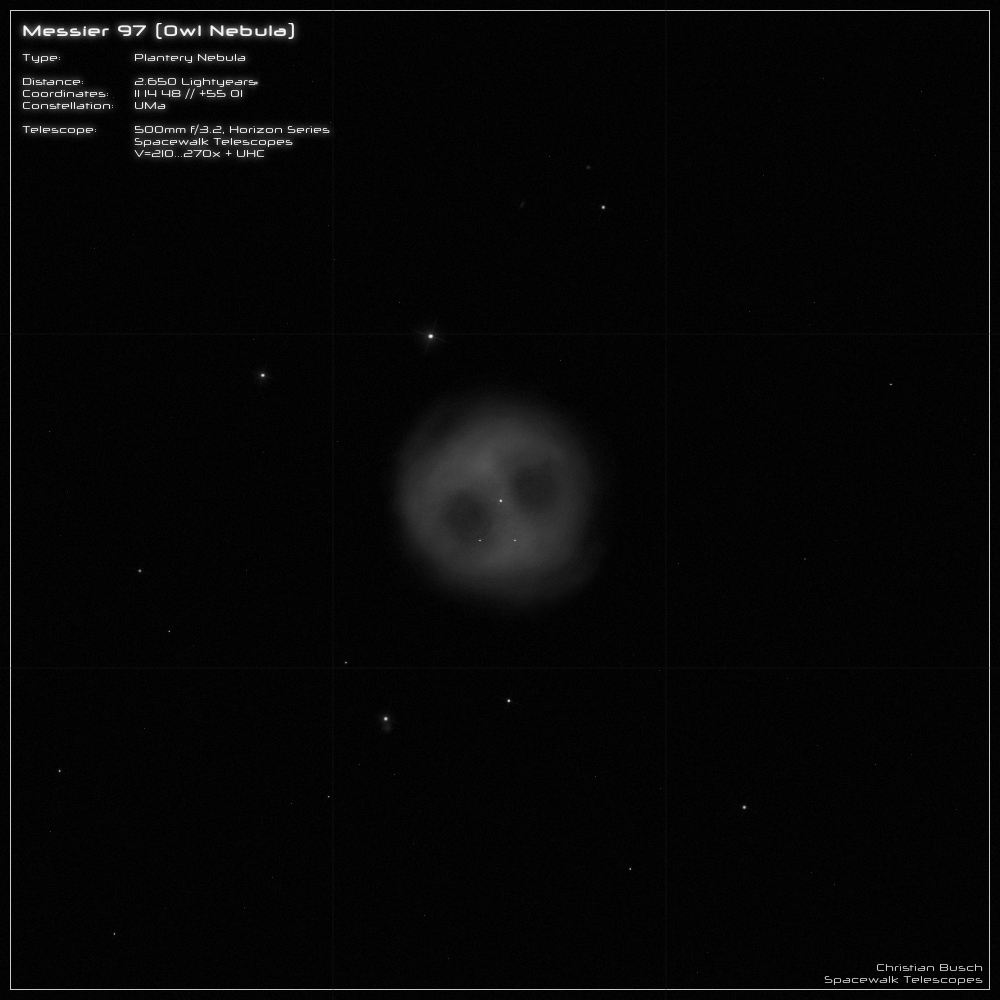Messier 97 - Owl Nebula
The “Owl Nebula” Messier 97, with an apparent brightness of 9.9mag and an apparent size of around 3.5', is located in the constellation of the Big
Dipper (UMa). It was discovered in February 1781 by Pierre Méchain.
The planetary nebula is around 2,600 light-years away from Earth. Its envelope has a diameter of around 2.6 light-years and expands into space at a
speed of 40 km/s. It consists of several concentric shells. One of the inner shells is not concentric, but bar-shaped and inclined by 45°. It is responsible
for the two dark spots that have given the nebula its name. The mass of the envelope was determined to be 0.15 solar masses. Its density is only
100 particles per cubic centimeter, which is less than in a high vacuum. The age of the nebula is given as 6,000 - 8,000 years.
The central star with the designation “WD 1111-552” is a white dwarf with 0.55 solar masses and an effective temperature of 120,000 Kelvin.
----------------------------------------------------------------------------------------------------------------------------------------------
I observed the Owl Nebula with my 20” Dobsonian at a magnification of 210x in combination with an UHC filter. The structures in the nebula were not so
easy to determine as they are very subtle. The outer halo was clearly visible, but difficult to distinguish. It showed a little structure at the top and bottom.
The two eyes appeared oval with no inner structure.
The central star was quite easy to recognize at 210x, but the two other stars in the nebula could also be held well with averted vision - however, they were
significantly fainter than the ZS.
In the immediate vicinity, I was also able to identify three partially very faint galaxies that were not so easy to see.

